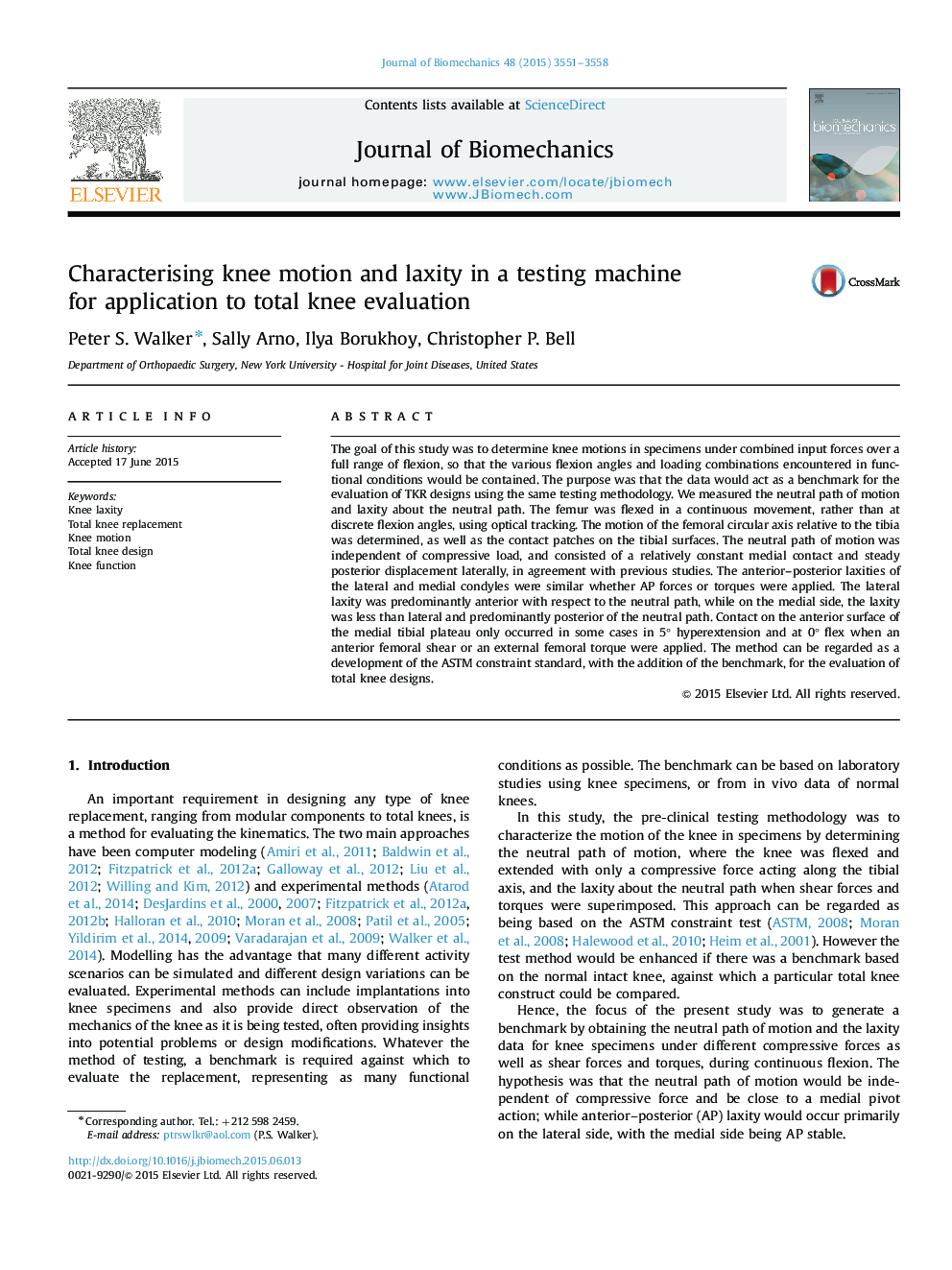| Article ID | Journal | Published Year | Pages | File Type |
|---|---|---|---|---|
| 871856 | Journal of Biomechanics | 2015 | 8 Pages |
The goal of this study was to determine knee motions in specimens under combined input forces over a full range of flexion, so that the various flexion angles and loading combinations encountered in functional conditions would be contained. The purpose was that the data would act as a benchmark for the evaluation of TKR designs using the same testing methodology. We measured the neutral path of motion and laxity about the neutral path. The femur was flexed in a continuous movement, rather than at discrete flexion angles, using optical tracking. The motion of the femoral circular axis relative to the tibia was determined, as well as the contact patches on the tibial surfaces. The neutral path of motion was independent of compressive load, and consisted of a relatively constant medial contact and steady posterior displacement laterally, in agreement with previous studies. The anterior–posterior laxities of the lateral and medial condyles were similar whether AP forces or torques were applied. The lateral laxity was predominantly anterior with respect to the neutral path, while on the medial side, the laxity was less than lateral and predominantly posterior of the neutral path. Contact on the anterior surface of the medial tibial plateau only occurred in some cases in 5° hyperextension and at 0° flex when an anterior femoral shear or an external femoral torque were applied. The method can be regarded as a development of the ASTM constraint standard, with the addition of the benchmark, for the evaluation of total knee designs.
